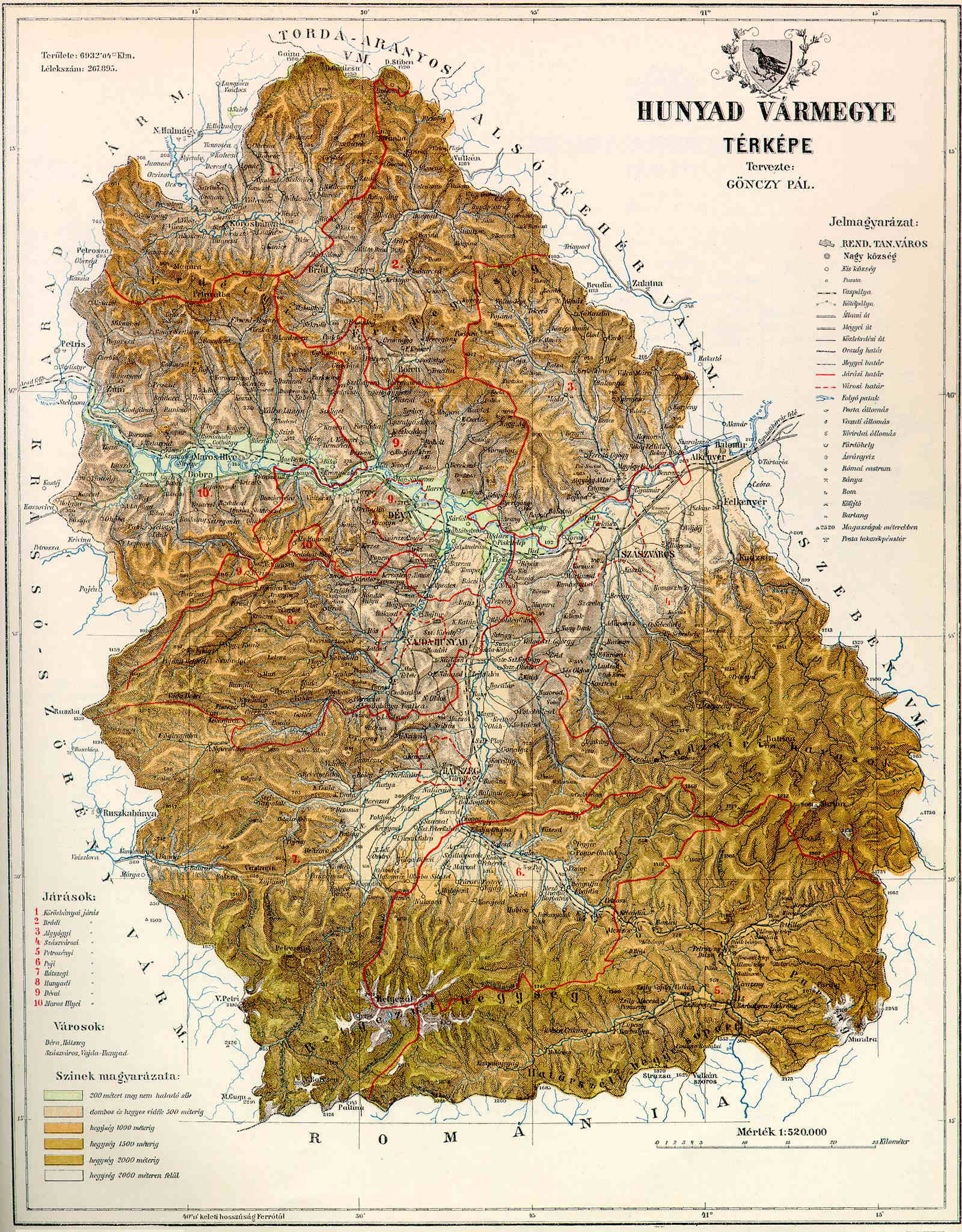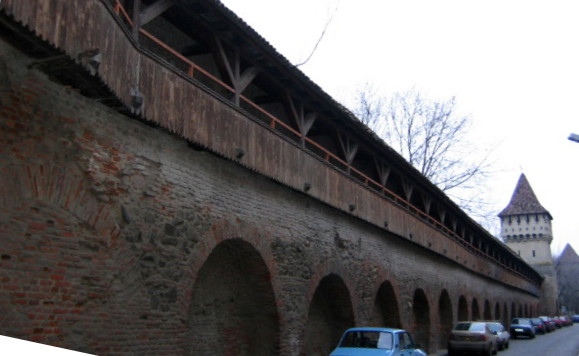|
Szeben
Szeben was an administrative county (comitatus) of the Kingdom of Hungary. Its territory is now in central Romania (southern Transylvania). The capital of the county was Nagyszeben (present-day Sibiu). Geography Szeben County shared borders with Romania and the Hungarian counties Hunyad, Alsó-Fehér, Nagy-Küküllő, and Fogaras. The river Olt flowed through the county. Its area was around 1910. History Szeben County was formed in 1876, when the administrative structure of Transylvania was changed. It included the former Saxon seats of Hermannstadt/Sibiu, Mühlbach/Sebeș, Reussmarkt/ Miercurea, and (most of) Nocrich, as well as parts of Alsó-Fehér and Felső-Fehér counties. In 1920, by the Treaty of Trianon, the county became part of Romania. Its territory lies in the present Romanian counties Sibiu and Alba (the area around Sebeș Sebeș (; German: ''Mühlbach''; Hungarian: ''Szászsebes''; Transylvanian Saxon: ''Melnbach'') is a city in Alba County, central R ... [...More Info...] [...Related Items...] OR: [Wikipedia] [Google] [Baidu] |
Sibiu County
Sibiu County () is a county () of Romania, in the historical region of Transylvania. Its county seat () is the namesake town of Sibiu (). Name In Hungarian, it is known as ''Szeben megye'', and in German as ''Kreis Hermannstadt''. Under the Kingdom of Hungary, a county with an identical name (Szeben County, ) was created in 1876. Demographics At the 2021 census, Sibiu county had a population of 388.326 residents and a population density of 71.48/sq.km(27,59sq.mi) At the 2011 Romanian census, 2011 census, the county has the following population indices: * Romanians – 91.25% (or 340,836) * Romani people in Romania, Romani – 4.76% (or 17,901) * Hungarians in Romania, Hungarians – 2.89% (or 10,893) * Germans of Romania, Germans (Transylvanian Saxons) – 1.09% (or 4,117) * Minorities of Romania, Other – 0.1% (or 640) At the 2021 Romanian census, 2021 census, the county has the following population indices: * Romanians – 93.36% (or 313,118) * Romani people in ... [...More Info...] [...Related Items...] OR: [Wikipedia] [Google] [Baidu] |
Nagy-Küküllő County
Nagy-Küküllő () was an administrative county (Comitatus (Kingdom of Hungary), comitatus) of the Kingdom of Hungary. Its territory is now in central Romania (central Transylvania). Nagy-Küküllő is the Hungarian language, Hungarian name for the river Târnava Mare. The capital of the county was Segesvár (present-day Sighișoara). Geography Nagy-Küküllő County shared borders with the Hungarian counties Alsó-Fehér County, Alsó-Fehér, Kis-Küküllő County, Kis-Küküllő, Udvarhely County, Udvarhely, Háromszék County, Háromszék, Brassó County, Brassó, Fogaras County, Fogaras, and Szeben County, Szeben. The river Târnava Mare formed part of its northern border and the river Olt (river), Olt part of its southern border. Its area was around 1910. History Nagy-Küküllő County came into existence in 1876, when the administrative structure of Transylvania was changed and Küküllő County was split. In 1920, by the Treaty of Trianon, the county became part of Roma ... [...More Info...] [...Related Items...] OR: [Wikipedia] [Google] [Baidu] |
Alsó-Fehér County
Alsó-Fehér was an administrative county (comitatus) of the Kingdom of Hungary. Its territory is now in western Romania (central Transylvania). The latest capital of the county was Nagyenyed (present-day Aiud). Geography Alsó-Fehér county shared borders with Hunyad, Torda-Aranyos, Kis-Küküllő, Nagy-Küküllő and Szeben counties. The rivers Mureș and Târnava flowed through the county. Its area was 3,576.5 km2 around 1910. History Alsó-Fehér (Lower Fehér) county was formed when Fehér county was split in 1744 (the other half, Felső-Fehér county, consisted entirely of enclaves between Székely and Saxon ''seats''). In 1876, when the administrative structure of Transylvania was changed, the territory of Alsó-Fehér was modified and parts of it were annexed to the counties of Torda-Aranyos and Seben (during the same administrative reform, Felső-Fehér county was entirely abolished and merged with other counties). In 1920, the Treaty of Trianon assigned the ... [...More Info...] [...Related Items...] OR: [Wikipedia] [Google] [Baidu] |
Fogaras County
Fogaras was an administrative county (Comitatus (Kingdom of Hungary), comitatus) of the Kingdom of Hungary. Its territory is now in central Romania (south-eastern Transylvania). The county's capital was Făgăraș, Fogaras (present-day Făgăraș). Geography Fogaras county shared borders with Romania and the Hungarian counties Szeben County, Szeben, Nagy-Küküllő County, Nagy-Küküllő and Brassó County, Brassó. The river Olt (river), Olt formed most of its northern border. The ridge of the southern Carpathian Mountains forms its southern border. Its area was around 1910. History The Fogaras region was an administrative territorial entity of the Kingdom of Hungary since the 15th century. Fogaras county was formed in 1876, when the administrative structure of Transylvania was changed. In 1920, by the Treaty of Trianon the county became part of Romania; Făgăraș County was created, with an identical territory. The territory lies in the present Romanian counties Brașov C ... [...More Info...] [...Related Items...] OR: [Wikipedia] [Google] [Baidu] |
Hunyad County
Hunyad (today mainly Hunedoara (county), Hunedoara) was an administrative county (Comitatus (Kingdom of Hungary), comitatus) of the Kingdom of Hungary, of the Eastern Hungarian Kingdom and of the Principality of Transylvania (other), Principality of Transylvania. Its territory is now in Romania in Transylvania. The capital of the county was Déva (present-day Deva, Romania, Deva). Geography After 1876, Hunyad county shared borders with Romania and the Hungarian counties Krassó-Szörény, Arad (Hungarian county), Arad, Torda-Aranyos, Alsó-Fehér and Szeben. Its area was 7,809 km2 around 1910. Etymology The toponym Hunyad most likely comes from the Hungarian language, Hungarian verb, meaning 'to close' or 'to die'. According to linguist Géza Kuun, the name may keep the memory of the Huns. History The first known civilization living on the territory were the Scythian culture, Scythian Agathyrsi and Sigynnae. Later the Dacians under their leader Burebista esta ... [...More Info...] [...Related Items...] OR: [Wikipedia] [Google] [Baidu] |
Transylvania
Transylvania ( or ; ; or ; Transylvanian Saxon dialect, Transylvanian Saxon: ''Siweberjen'') is a List of historical regions of Central Europe, historical and cultural region in Central Europe, encompassing central Romania. To the east and south its natural border are the Carpathian Mountains and to the west the Apuseni Mountains. Broader definitions of Transylvania also include the western and northwestern Romanian regions of Crișana and Maramureș, and occasionally Banat. Historical Transylvania also includes small parts of neighbouring Western Moldavia and even a small part of south-western neighbouring Bukovina to its north east (represented by Suceava County). Transylvania is known for the scenery of its Carpathian landscape and its rich history, coupled with its multi-cultural character. It also contains Romania's second-largest city, Cluj-Napoca, and other very well preserved medieval iconic cities and towns such as Brașov, Sibiu, Târgu Mureș, Bistrița, Alba Iuli ... [...More Info...] [...Related Items...] OR: [Wikipedia] [Google] [Baidu] |
Sibiu
Sibiu ( , , , Hungarian: ''Nagyszeben'', , Transylvanian Saxon: ''Härmeschtat'' or ''Hermestatt'') is a city in central Romania, situated in the historical region of Transylvania. Located some north-west of Bucharest, the city straddles the Cibin River, a tributary of the Olt River. Now the seat of Sibiu County, between 1692 and 1791 and 1849–65 Sibiu was the capital of the Principality of Transylvania. Until 1876, the Hecht hause in Sibiu served as the seat of the Transylvanian Saxon University. Nicknamed ''The Town with Eyes'' for the eyebrow dormers on many old buildings, the town is a popular tourist destination. It is known for its culture, history, cuisine, and architecture. In 2004, its historical center was added to the tentative list of UNESCO World Heritage Sites. Sibiu was subsequently designated the European Capital of Culture in 2007, along with Luxembourg City. One year later, it was ranked "Europe's 8th-most idyllic place to live" by ''Forbes''. Sibi ... [...More Info...] [...Related Items...] OR: [Wikipedia] [Google] [Baidu] |
Calvinism
Reformed Christianity, also called Calvinism, is a major branch of Protestantism that began during the 16th-century Protestant Reformation. In the modern day, it is largely represented by the Continental Reformed Christian, Presbyterian, Congregational, and Waldensians traditions, as well as parts of the Methodist, Anglican (known as "Episcopal" in some regions) and Baptist traditions. Reformed theology emphasizes the authority of the Bible and the sovereignty of God, as well as covenant theology, a framework for understanding the Bible based on God's covenants with people. Reformed churches emphasize simplicity in worship. Several forms of ecclesiastical polity are exercised by Reformed churches, including presbyterian, congregational, and some episcopal. Articulated by John Calvin, the Reformed faith holds to a spiritual (pneumatic) presence of Christ in the Lord's Supper. Emerging in the 16th century, the Reformed tradition developed over several genera ... [...More Info...] [...Related Items...] OR: [Wikipedia] [Google] [Baidu] |
Romanian Language
Romanian (obsolete spelling: Roumanian; , or , ) is the official and main language of Romania and Moldova. Romanian is part of the Eastern Romance languages, Eastern Romance sub-branch of Romance languages, a linguistic group that evolved from several dialects of Vulgar Latin which separated from the Italo-Western languages, Western Romance languages in the course of the period from the 5th to the 8th centuries. To distinguish it within the Eastern Romance languages, in comparative linguistics it is called ''#Dialects, Daco-Romanian'' as opposed to its closest relatives, Aromanian language, Aromanian, Megleno-Romanian language, Megleno-Romanian, and Istro-Romanian language, Istro-Romanian. It is also spoken as a minority language by stable communities in the countries surrounding Romania (Romanians in Bulgaria, Bulgaria, Romanians in Hungary, Hungary, Romanians in Serbia, Serbia and Romanians in Ukraine, Ukraine), and by the large Romanian diaspora. In total, it is spoken by 2 ... [...More Info...] [...Related Items...] OR: [Wikipedia] [Google] [Baidu] |







